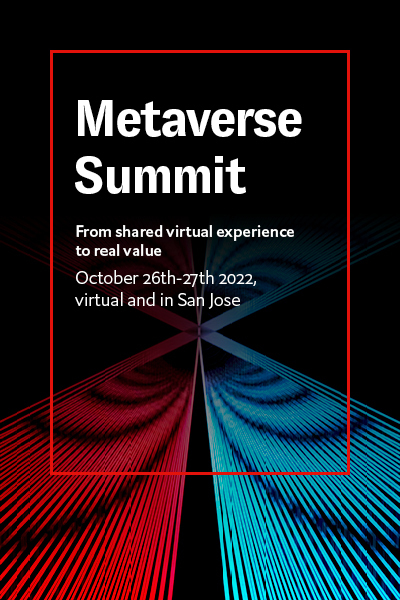- Last modified: December 4, 2024
Insider Brief
- AI systems are becoming autonomous agents in economic ecosystems, using cryptographic tools like TEEs to manage crypto wallets and participate in decentralized markets, according to an a16zcrypto report.
- Decentralized autonomous chatbots (DACs) can generate income, manage assets, and build followings independently, highlighting the need for decentralization to ensure security and resilience.
- The convergence of AI and crypto requires innovations like “proof of personhood” for identity verification and leverages blockchain for governance, resource management, and tokenized assets.
Artificial intelligence (AI) and cryptocurrency are converging in ways that could reshape technology, markets and governance, a report from a leading Web 3 and crypto venture capital fund suggests. This shift signals an era where AI systems act autonomously in economic systems, pushing the boundaries of innovation while raising critical regulatory and ethical questions.
AI Systems as Market Participants
According to a16zcrypto’s post on “A few of the things we’re excited about in crypto (2025),” AI is transitioning from being a back-end tool to acting as a participant in economic ecosystems. The analysts from a16zcrypto report that AI systems will increasingly act as autonomous agents, capable of managing their own crypto wallets. This leap would allow AI to independently trade assets, coordinate resources, and participate in decentralized markets.
Carra Wu, a16zcrypto partner, points to the potential for AI agents to operate nodes in decentralized physical infrastructure networks (DePIN), such as distributed energy grids. These agents could also engage in online economies, including gaming, where they may evolve into valuable participants, or even owners, of digital networks.
Such autonomy is made possible through cryptographic technologies like trusted execution environments (TEEs). TEEs create secure spaces where AI software can run without interference, ensuring systems are not manipulated by human operators. This technical safeguard is critical for establishing trust in autonomous AI.
Decentralized Autonomous Chatbots
A related innovation is the development of decentralized autonomous chatbots (DACs). Unlike conventional chatbots, DACs could generate income, manage crypto assets and build followings on decentralized social platforms—all without human intervention. These bots would operate on permissionless blockchain networks, using consensus protocols to maintain autonomy.
DACs represent a new frontier for AI, write Dan Boneh, Karma, Daejun Park and Daren Matsuoka. Such systems could lead to the first truly autonomous billion-dollar digital entities.
They write: “Such a chatbot could build a following by posting appealing content, whether entertaining or informative. It would build a following on decentralized social media; generate income in various ways from the audience; and manage its assets in crypto. The relevant secret keys would be managed in a TEE that also runs the chatbot software — which means that no one has access to those secret keys other than that software.”
However, they caution that decentralization must remain a core principle, as it protects against misuse and ensures resilience.
The Challenge of Verifying Personhood
As AI systems proliferate, distinguishing between human users and AI agents will become increasingly difficult. A16zcrypto analyst Eddy Lazzarin emphasizes the need for “proof of personhood” mechanisms. These systems link digital identities to real people in a privacy-preserving way, addressing threats like deepfakes and impersonation scams.
“‘Proof of personhood’ is an important building block in establishing digital identity. But here, it becomes a mechanism for increasing the marginal cost of attacking a person or undermining the integrity of a network: Obtaining a unique ID is free for humans, but costly and difficult for AIs,” Lazzarin writes. By ensuring that humans, not AIs, dominate critical networks, these systems protect the integrity of both digital and physical environments.
The Role of Blockchain in Prediction and Governance
Blockchains will likely perform foundational roles new models for information aggregation and governance. Analysts at a16zcrypto believe that prediction markets, which gained traction during the 2024 U.S. elections, are a stepping stone to broader applications. These markets leverage blockchains to gather and verify data from distributed sources, potentially transforming fields like community governance and finance.
Andrew Hall highlights the potential of “liquid democracy,” a blockchain-enabled system where individuals can vote on issues directly or delegate their votes to trusted representatives. This could fundamentally change how local governance works, he suggests, noting that blockchain technology provides the security and scalability needed for such systems.
Tokenization of Assets and New Opportunities
AI enterprises will likely be interested in how tokenization will affect their businesses.
Tokenizing unconventional assets—ranging from medical data to physical infrastructure—represents another frontier for blockchain technology. Aaron Schnider draws parallels to fracking, which unlocked previously inaccessible oil reserves. Tokenization could similarly bring untapped resources into the global economy.
For example, decentralized science (DeSci) projects are using blockchain to manage medical data transparently. Such models allow individuals to maintain ownership of their data while earning income through smart contracts, paving the way for new forms of economic participation.
Implications for Regulation and Innovation
As AI and crypto technologies advance, regulatory frameworks will need to evolve. The analysts stress that safeguards like TEEs and proof of personhood systems are essential, but broader oversight may be required to address risks such as fraud, misuse, and systemic instability.
Despite these challenges, the convergence of AI and crypto appears to be headed toward offering unprecedented opportunities. From autonomous agents managing decentralized networks to enterprises streamlining payments, these technologies are laying the groundwork for a more interconnected and efficient digital ecosystem.
For policymakers, innovators, and users, the report indicates that the question is not whether to engage with these trends but how to do so responsibly.






